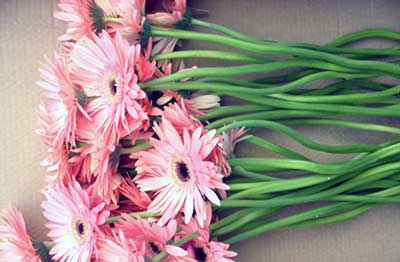It's fun to watch
hummingbirds drinking from red plastic feeders, but there's nothing like seeing
them sipping from the flowers in your own garden. For the last few years, I’ve
been observing hummingbirds in the hope of discovering their favorite flowers.
But just when I think I’ve figured it out, the funny little birds change their
minds.
One
day, they spend all their time visiting the salvias, and another day, they
prefer the zinnias. When I expressed my frustration at not being able identify
which flowers were the best, my husband said, “Well, some days you feel like
eating broccoli, and other days you want chocolate cake. Maybe it’s the same
way with hummingbirds.”
So
here’s my list of favorite hummingbird flowers. You might be tempted to plant
only “chocolate cake”, but remember that, “Variety is the spice of life”. So
the more selection you have, the better.
Hummingbird
Flowers
Agastache
rupestris (Sunset Hyssop) -- Think of this large perennial as a low-maintenance
hummingbird feeder. Also consider other Agastache species.
Aquilegia
(Columbine) -- It sometimes works. Aquilegia formosa is a good red.
Asclepias
tuberosa (Butterfly Weed) -- Not just for butterflies! Butterfly weed also
attracts aphids, and hummingbirds eat aphids and other small insects.
Ceratotheca
triloba (African Foxglove) -- If you need a tall annual for the back of the
border, try African foxglove. The hummingbirds enjoy this rare flower.
Cleome
(Spider Flower) -- Cleome serrulata and Cleome spinosa both attract
hummingbirds to some degree. Hummingbirds will perch on the horizontal seedpods
of Cleome spinosa.
Cosmos
'Ladybird Scarlet' -- I planted this near my hummingbird feeder, and I was
surprised that some hummingbirds visited the cosmos more than the feeder.
Digitalis
(Foxglove) -- The tubular flowers sometimes attract hummingbirds, and the
plants are easy to grow in full sun or part shade. I was surprised one day to
see a hummingbird on the pale yellow Digitalis lutea. That's what I call
"hummingbird broccoli".
Ipomoea
(Morning Glory) -- Hummingbirds prefer the red varieties, of course, especially
if they're trellised up high, but all colors are good.
Ipomopsis
rubra (Standing Cypress) -- Chocolate cake for hummingbirds.
Lobelia
-- Hummingbird watchers rave over red-flowered Lobelia cardinalis. Combine it
with the blue-flowered Lobelia siphilitica for variety.
Lupine
-- This is a good hummingbird plant for early in the season before most of the
others start blooming.
Lychnis
chalcedonica (Maltese Cross) -- Definitely, chocolate cake for
hummingbirds.
Mirabilis
jalapa (Four O'Clock) -- The flowers close up in the heat of the afternoon, so
watch for hummingbirds in the early morning or evening.
Monarda
(Bee Balm) -- Attracts butterflies and hummingbirds.
Nicotiana
mutabilis (Flowering Tobacco) -- Out of all my flowering tobacco varieties,
this one is the most popular with hummingbirds.
Oenothera
'Lemon Sunset' (Evening Primrose) -- Hummingbirds visit these fragrant flowers
in the morning.
Penstemon
(Beardtongue) -- Most penstemons, especially the red ones, are chocolate cake
for hummingbirds.
Perovskia
atriplicifolia (Russian Sage) -- I was surprised to see a hummingbird returning
to this plant several times one day, especially since there was an agastache
nearby that should have been more tempting.
Salvia
(Sage) -- Many salvia species attract hummingbirds. Some of the best are Salvia
coccinea, Salvia 'Coral Nymph', Salvia azurea and Salvia farinacea.
Silene
'Jack Flash' -- One morning, I was pollinating a red daylily next to my patch
of Silene 'Jack Flash', and a hummingbird tried to scare me off. When the
attempt failed, he relented and agreed to share the space with me. He really
wanted that silene!
Tithonia
'Torch' (Mexican Sunflower) -- A great butterfly magnet, but it sometimes
attracts hummingbirds as well.
Verbena
bonariensis -- Another one for both hummingbirds and butterflies.
Zinnia
-- The zinnias are always a big hit!
Here
are more flowers that I came across in my research that are worth trying:
Abelia,
azalea, begonia, bleeding heart, bovardia, butterfly bush, canna lily, catmint,
chelone, clematis, crabapple, crocosmia, dahlia, Dicliptera suberecta, eupatorium,
flowering quince, fuschia, gaura, geranium, gladiolus, goldenrod, hawthorne, hesperis,
heuchera, hibiscus, honeysuckle, hosta, impatiens, iris, kniphofia, lantana, liatris,
lilac, lily, mock orange, nasturtium, pentas, petunia, phlox, physostegia, rose
of sharon, scarlet runner bean, Stachys coccinea,
sweet
pea, trumpet vine, veronica, weigela, wisteria, yucca, zauschneria.
















